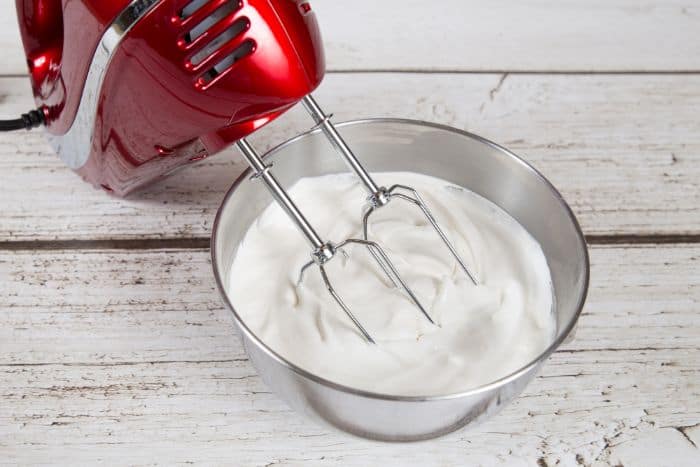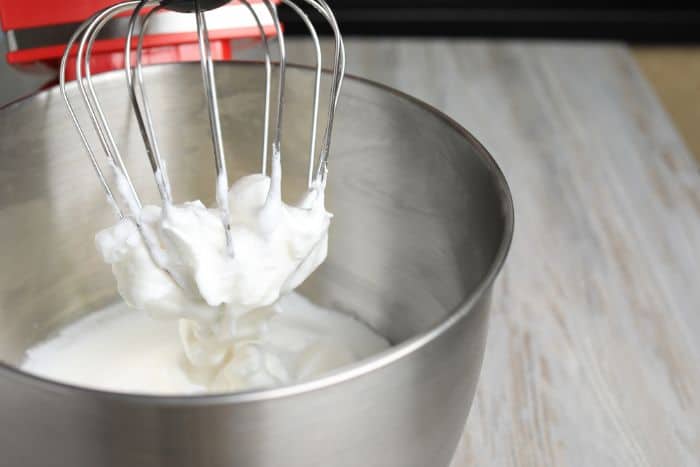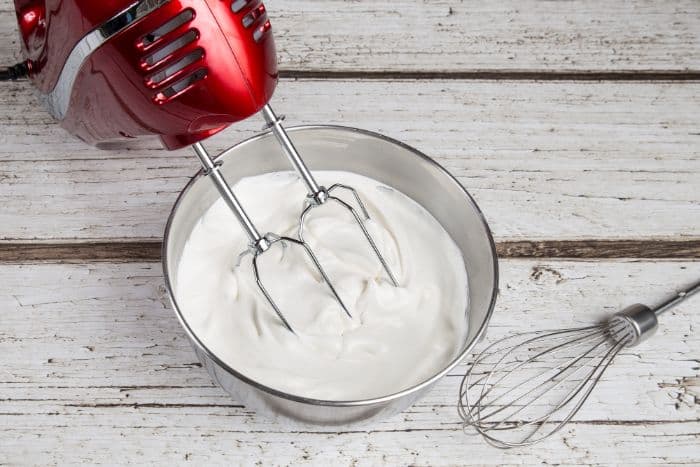How long does whipped cream last at room temperature? Find out the shelf life as well as tips for extending it to keep your homemade whipped cream fresher for longer!
Whipped cream is a delightful addition to many desserts and beverages, adding a touch of indulgence to your culinary creations. Have you ever wondered how long whipped cream can last at room temperature before it spoils? The topic is essential when it comes to food safety, as leaving whipped cream out for too long can lead to bacterial growth and spoilage.

Several factors can affect, the shelf life of whipped cream, such as the type of cream used, storage conditions, and the presence of other ingredients like sugar or flavors. Room temperature plays a crucial role in determining how long whipped cream can be left out safely. According to Tasting Table, whipped cream should not be left at room temperature for more than 2 hours, regardless of whether it is dairy or non-dairy.
Key Takeaways
- Whipped cream should not be left at room temperature for more than 2 hours.
- The shelf life of whipped cream depends on factors like the type of cream, storage conditions, and additional ingredients.
- To ensure food safety, always check for signs of spoilage and adhere to proper storage guidelines for different types of whipped cream.
Factors Affecting Whipped Cream Shelf Life
Temperature
One of the significant factors affecting the shelf life of whipped cream is the temperature at which it is stored. At room temperature, whipped cream may only last for up to 2 hours, as the cream’s fat content can cause it to spoil quickly. It’s crucial to ensure that the storage area is cool and dry to maintain its freshness.
Refrigeration
Refrigerating your whipped cream can help extend its shelf life. Properly stored whipped cream can last up to 3 days in the refrigerator, maintaining its texture and flavor. Before using refrigerated whipped cream, give it a quick whisk to restore its light and fluffy consistency. Freezing is an option if you want to store the whipped cream for a more extended period. Whipped cream can be frozen for up to three months.
Air Exposure
Limiting air exposure is essential in maintaining the whipped cream’s freshness. Storing it in an airtight container can help prevent the cream from absorbing odors or flavors, and it keeps it from drying out. This storage method also reduces the possibility of bacterial contamination.
In addition to these factors, additives can play a role in extending the whipped cream’s lifespan. Store-bought whipped cream may contain stabilizers that can extend its shelf life by keeping it firm and preventing it from separating.
If you’re making homemade whipped cream, consider adding small amounts of ingredients like cream of tartar, instant pudding mix, gelatin, or powdered sugar to help maintain its texture and stability over time.
You might enjoy these recipes:
- Can You Freeze Simple Syrup?
- How Long Does Horseradish Last? Tips from Fridge to Plate
- How Long Does Chicken Salad Last?
- How Long Does Tuna Last?

Recognizing Spoiled Whipped Cream
When it comes to recognizing spoiled whipped cream, paying attention to its appearance, texture, and smell is crucial. Here are some key indicators that your whipped cream has gone bad:
1. Mold: Check for any visible signs of mold on the surface of the whipped cream. Mold tends to appear as fuzzy patches and could be of various colors, such as green, black, or white. If you notice any mold growth, discard the whipped cream immediately.
2. Texture: Observe the texture of your whipped cream. Fresh whipped cream should be light, fluffy, and hold its shape well. If it has lost its volume and appears watery, thin, or curdled, it’s a sign that it’s no longer good to consume.
3. Smell: Trust your senses and give the whipped cream a sniff. Fresh whipped cream should have a mild and sweet aroma. On the other hand, spoiled whipped cream may have a sour, off, or unpleasant odor.
Keep in mind that whipped cream is a perishable dairy product, and it’s essential to ensure proper storage conditions to prevent it from spoiling. The optimal environment for whipped cream is refrigerated, but if you need to keep it at room temperature for a short period, make sure it doesn’t sit out for more than two hours.
By staying vigilant and using these guidelines, you can identify whether your whipped cream is safe to consume or needs to be discarded.
Storing Different Types of Whipped Cream
Homemade Whipped Cream
When storing homemade whipped cream, it’s important to remember that it tends to be more delicate than store-bought or aerosol options. To increase its longevity, consider adding a stabilizer like powdered sugar or even a few spoonfuls of cream cheese during the whipping process.
Once your homemade whipped cream is ready, transfer it to an airtight container and store it in the refrigerator. Homemade whipped cream can last up to three days in the fridge, but it’s best to use it as soon as possible for the freshest taste. Keep in mind, your leftover whipped cream might lose its stiff peaks over time.
Store-Bought Whipped Cream
Store-bought whipped cream, whether it’s made from dairy or non-dairy alternatives, generally has a longer shelf life than homemade varieties due to added stabilizers. When storing store-bought whipped cream, simply follow the storage instructions on the packaging, as different brands have varying recommendations.
Typically, it’s best to keep whipped cream in the refrigerator to maintain its texture and flavor. Depending on the brand and whether it’s dairy or non-dairy, refrigerated whipped cream can last anywhere from one to three weeks.
Aerosol Whipped Cream
Aerosol whipped cream, such as canned whipped cream and store-bought aerosol whipped cream, lasts the longest among the three types. To store it properly, ensure that you keep it in a cool and dry place, away from direct sunlight or heat sources.
After opening, store the can in the refrigerator with the nozzle facing down. This will help maintain the creamy texture and prevent the whipped cream from separating.
Aerosol whipped cream typically lasts for two to three months in the refrigerator, but always check for signs of spoilage or changes in texture before using it.

Extending Whipped Cream Shelf Life
Use of Additives
To extend the shelf life of whipped cream, you can incorporate additives like gelatin which will help increase its stability. To do this, sprinkle 1/2 teaspoon of gelatin over 1 tablespoon of cold water for every cup of whipping cream and let it rest for 5 minutes. Next, heat the mixture in the microwave for 5 to 10 seconds until the gelatin melts into a clear liquid. Let the gelatin cool while you start whipping the cream, then add it during the soft-peak stage. This method will help stabilize the whipped cream and make it last longer at room temperature.
Another additive you can use is instant pudding mix. Simply add a tablespoon of pudding mix to your whipped cream while whipping. This will enhance both the flavor and the stability of your whipped cream, allowing it to hold its shape longer.
Freezing Whipped Cream
If you need to store whipped cream for an extended period, consider placing it in the freezer. This method can help preserve the whipped cream for up to three months. To freeze your whipped cream, spread it evenly on a parchment-lined baking sheet and gently place it in the freezer.
Once the whipped cream is frozen, transfer it to an airtight container or a plastic freezer bag, ensuring that it’s well-sealed to avoid freezer burn. When you’re ready to use the whipped cream, thaw it in the refrigerator before serving.
Remember, the key to prolonging whipped cream’s shelf life is to keep it at the proper temperature, whether it’s at room temperature with the help of additives or in the freezer for longer-term storage.
In summary, it’s important to keep an eye on how long whipped cream has been sitting at room temperature before consuming. As a general guideline, whipped cream should not be left out at room temperature for more than 2 hours, whether it’s dairy or non-dairy.
For longer storage, it’s advisable to place your whipped cream in the refrigerator, where it can last up to 3 days (for the homemade stuff) or a week (for the store-bought kind) in an airtight container. Remember to refrigerate it promptly after use and avoid exposing it to room temperature for extended periods.
If you’re working with homemade whipped cream, you can enhance its longevity by using proper stabilizers. This will help maintain the cream’s light and fluffy consistency for up to three days. To further extend the shelf life, consider freezing your whipped cream, as both homemade and store-bought varieties can be stored in the freezer for up to three months.






